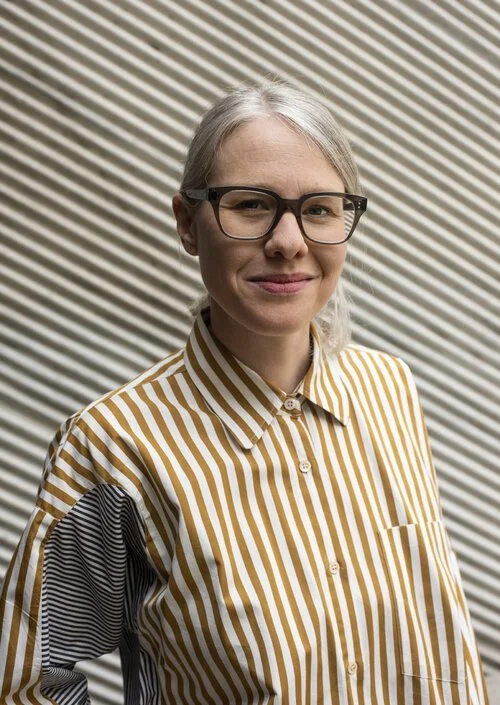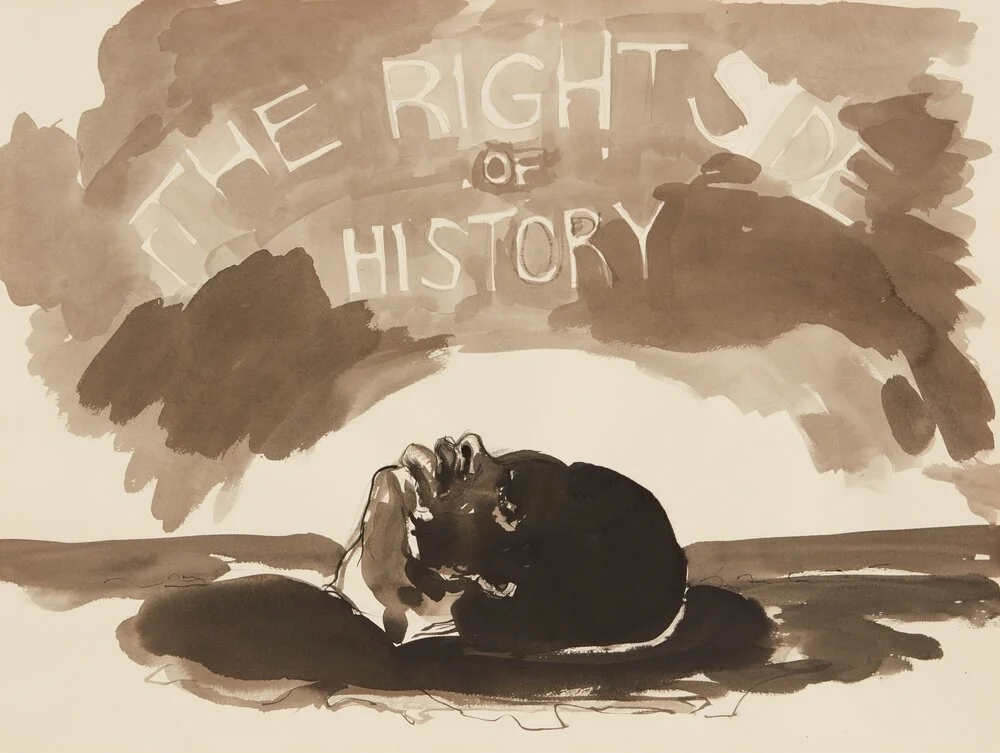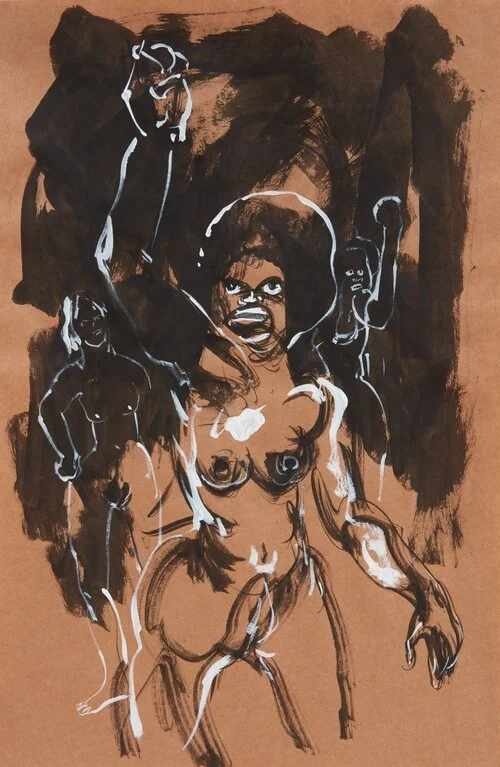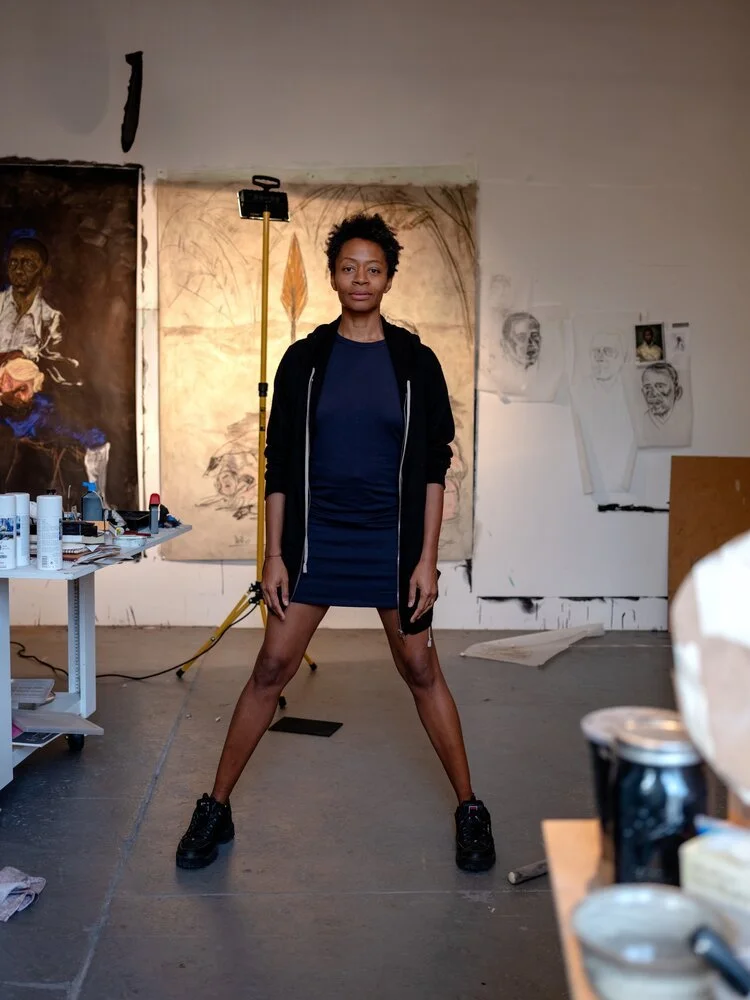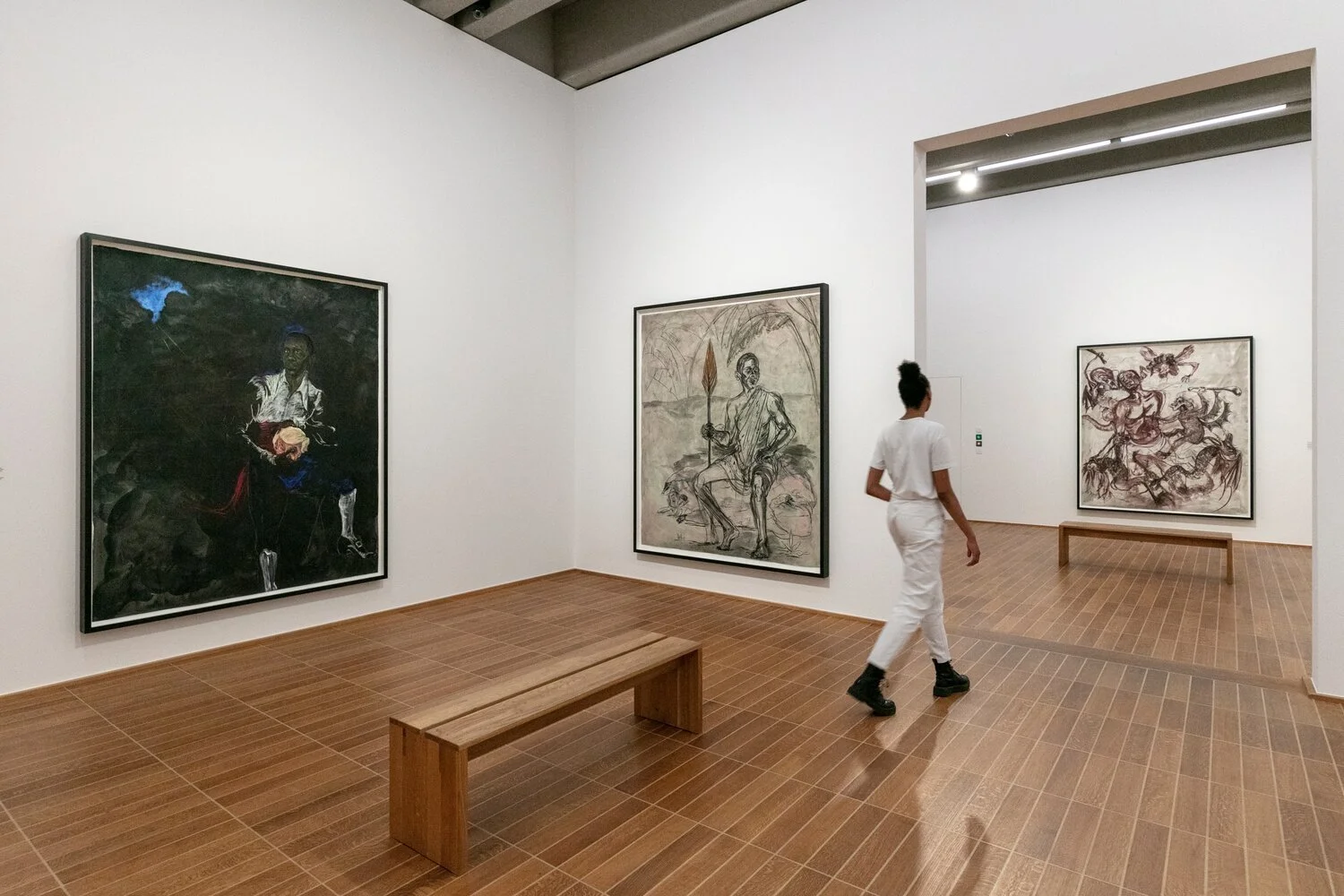VOLTA VOICES | MAJA WISMER
HEAD OF CONTEMPORARY ART AT KUNSTMUSEUM BASEL
VOLTA Voices is a recurring interview series with vanguards of the contemporary art world, whose insights into their experiences, concerns, and practices exemplify the very best of creative culture today. More than simply experts, these friends of VOLTA are supporters, colleagues, friends, family.
This time, Kamiar Maleki talks to Maja Wismer, Head of Contemporary Art at Kunstmuseum Basel. Read the interview as they discuss her journey in the art world, how she wants to position the museum in the future and what excites her most about the museums’s current exhibition “A Black Hole is Everything a Star Longs to Be.” by Kara Walker.
Kamiar Maleki: Maja, tell us a bit about yourself, your journey in the art world, and your experience as the new head of contemporary art at Kunstmuseum Basel.
Maja Wismer, Head of Art after 1960/Contemporary Art at Kunstmuseum Basel, Foto: Christian Knörr
Maja Wismer: I am an art historian with a special interest in art of the late 20th and early 21st century. Having been surrounded by artworks and artists since I can remember, it took a while to realize that I would want to contribute to the field myself. Since my early semesters at university, I expanded my academic approach by working with artists, works of art, and their audiences, both locally and abroad. I felt very lucky when I was accepted as a Curatorial Fellow at the Busch Reisinger Museum of the Harvard Art Museums. It was where I began to realize that museums with diverse audiences and vast holdings, can – at best – become incredibly productive and dynamic places. As the head of the department of art after 1960 and contemporary art at Kunstmuseum Basel, I’m excited to finding ways of activating this energy at the intersection of Basel audiences and the public art collection I’m entrusted with.
Kamiar Maleki: You were appointed in October last year. Which projects have you been working on in the past months?
Maja Wismer: These past months have been defined by two major projects:
My first decision was to move the works by the influential West German artist Joseph Beuys from the contemporary ‘realm’ into the galleries dedicated to art of the 1960s and 1970s. It was especially in working with Beuys in the 1970s that the historic building of Kunstmuseum Basel became too limiting in moving forward. Thanks to a very generous private initiative, Kunstmuseum Basel opened the “Museum für Gegenwartskunst” (today Kunstmuseum Basel | Gegenwart), one of the first museums dedicated exclusively to contemporary art in 1980. Subsequently, the works by Beuys were installed on the top floor shortly after its completion. This year marks this artist’s hundredth birthday: the moment seemed right to shed new light onto his legacy at Kunstmuseum Basel.
Along with thinking about how to navigate with Beuys into his next century, I invited Aotearoa New Zealand artist Ruth Buchanan to continue her investigation into the relationships between institutions such as archives, libraries, or museums, and their publics. Collection work, museum routing, and furniture design are all incorporated into her expansive colour-driven installations that ask us to reconsider the parameters under which we participate in and produce public life. The exhibition Heute Nacht geträumt, which translates as ‘Dreamt Tonight’, asks how these relationships could be shaped otherwise. Departing from the specific context of the paper factory on the Rhine, which was converted into a museum for contemporary art in the late 1970s, in conversation with myself and my team, Buchanan pursues the narratives inscribed in the architecture. I sometimes refer to the project as a kind of psychoanalysis of Kunstmuseum Basel | Gegenwart and its infrastructure – it’s a wonderful way to learn about this institution’s incredibly rich past and dive into its future.
Kamiar Maleki: How do you want to position the museum in the future?
Maja Wismer: Built as Museum für Gegenwartskunst (museum for contemporary art), the building’s function has changed significantly since the opening of Kunstmuseum Basel’s third venue in 2016, the prestigious Kunstmuseum Basel | Neubau, which provides space for monumental exhibition projects from works by old masters to key artists of the twentieth century. In light of this, it is my goal to strengthen the identity of today’s Kunstmuseum Basel | Gegenwart as a place reflecting upon contemporary practices. This of course triggers questions of when the contemporary actually begins or what contemporary art might be! I wish to position this museum building as a place for contemporary perspectives on the collection, a place for temporary exhibitions by artists who work now, and a place for experimental group shows that tackle contemporary topics through art. Most importantly, though, I want to position this venue of Kunstmuseum Basel as a place for public engagement with contemporary art.
Kamiar Maleki: In September, Basel visitors will have the chance to see “Kara Walker. A Black Hole is Everything a Star Longs to Be.” What excites you most about her work?
Kara Walker, The Right Side, 2018, Gouache on paper, 56,5 x 76,2 cm, © Kunstmuseum Basel, Kupferstichkabinett
Maja Wismer: I am absolutely fascinated by Kara Walker’s capability of ‘inventing’ compositions. This skill becomes all the more visible in the exhibition currently on view at Kunstmuseum Basel | Neubau. An exhibition for which the acclaimed artist threw open the doors to her personal archive that she had closely guarded for the past twenty-eight years. Kara Walker’s great craft of using modest means to create a maximum effect in order to tell the horrible stories of systemic racism and sexism become further palpable in her film works. To complement the exhibition Kara Walker. A Black Hole is Everything a Star Longs to Be we are showing two of her film works which recently entered our collection at Kunstmuseum Basel | Gegenwart.
Kara Walker, A Shocking Declaration of Independence, 2018, Gouache on brown paper, 57,5 x 38,1 cm, © Kunstmuseum Basel, Kupferstichkabinett
Kara Walker in her Studio, 2019, © Photo Ari Marcopoulos
Kamiar Maleki: How has the Kunstmuseum combatted the pandemic? And have there been any strategic changes?
Maja Wismer: As any museum we have had to postpone several exhibitions and cancel others. As a result, we significantly pushed our digital presence, with lasting effect. The changes in our schedule of exhibitions and programs furthermore provided us with some free mental space to discuss future projects and infrastructural changes which will prove productive in moving forward. Looking back, the global health crisis colliding with the Black Lives Matter movement, renewed requests for diversity and equity, as well as felt effects of climate change created a certain urgency which influences our future programming; it already has.
Kamiar Maleki: Being based in Basel yourself, what role do art fairs play in the museum and art landscape in Switzerland and especially Basel?
Maja Wismer: Well, since the first iteration of Art Basel in 1970, the week of the fair in June (September this year) is of special relevance for our programming. This is really the moment of the art world referred to in the question above. Hence it is when we want our exhibitions and programmes to ‘speak’ to an informed audience. It is also of course a moment of intensified networking and the beginning of future collaborations.
Kamiar Maleki: Do you collect art yourself, and where do you find most of the art you buy?
Maja Wismer: My privilege is to work with a very rich and diverse collection, which I’m obliged and honoured to develop further. While we don’t actually buy spontaneously at art fairs, they nevertheless are sites of encountering with art we may work towards including into the collection of Kunstmuseum Basel at a future moment. Privately, I live with works by friends or artists I worked with in the past.
Kamiar Maleki: What role do you feel satellite fairs like VOLTA could play in the future art fair landscape?
Maja Wismer: The more the better! I really think that satellite fairs like VOLTA add significantly to diversify the range within the art market.
Follow Kunstmuseum Basel on Instagram at @kunstmuseumbasel

